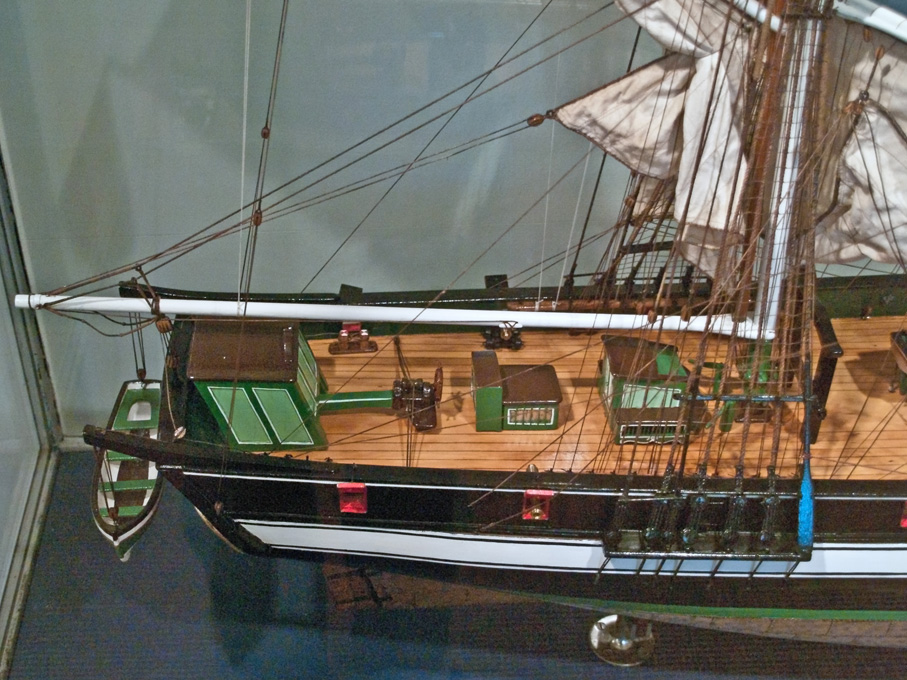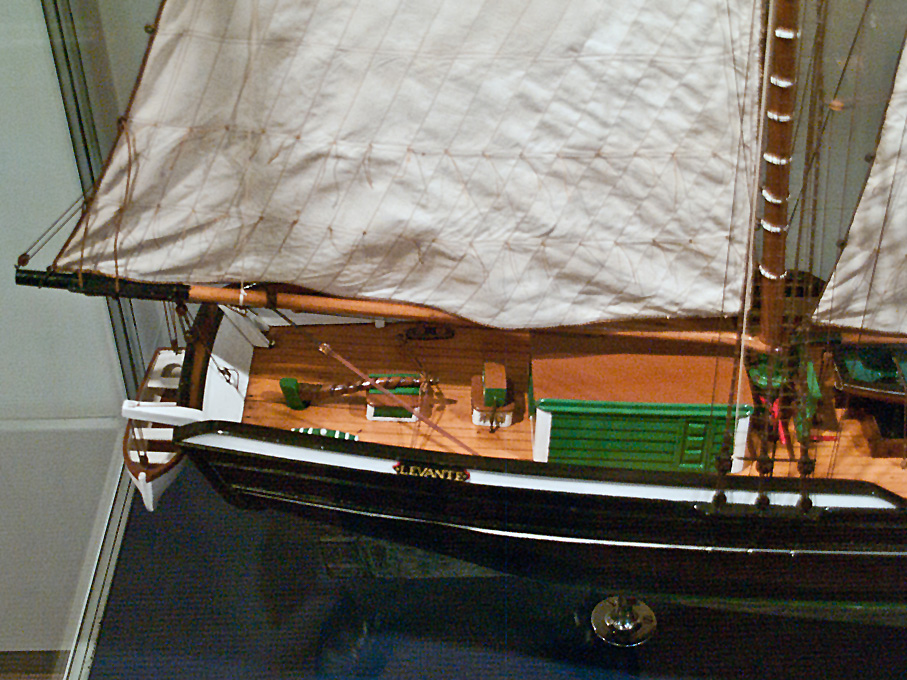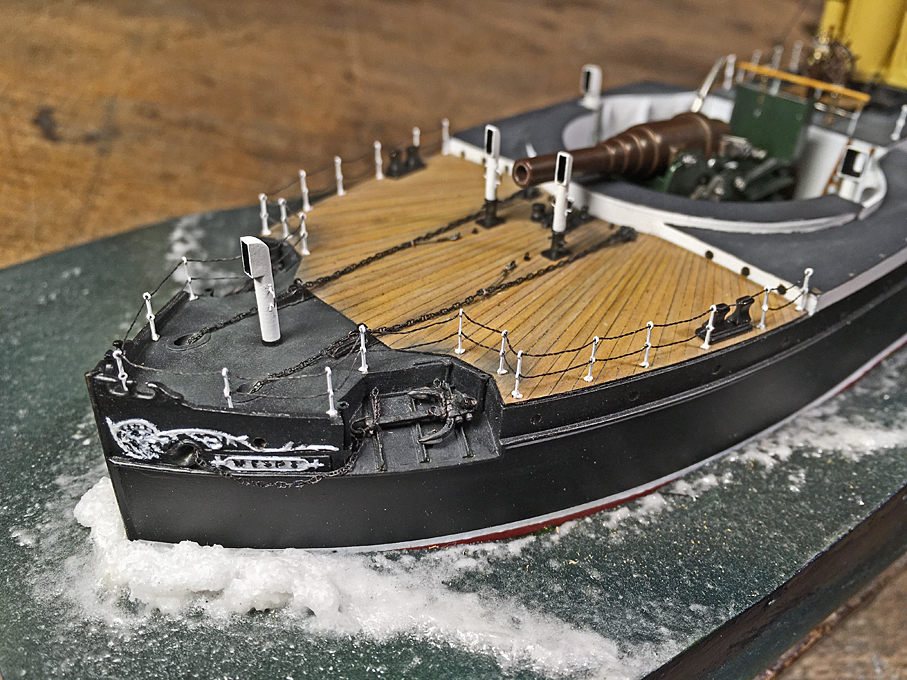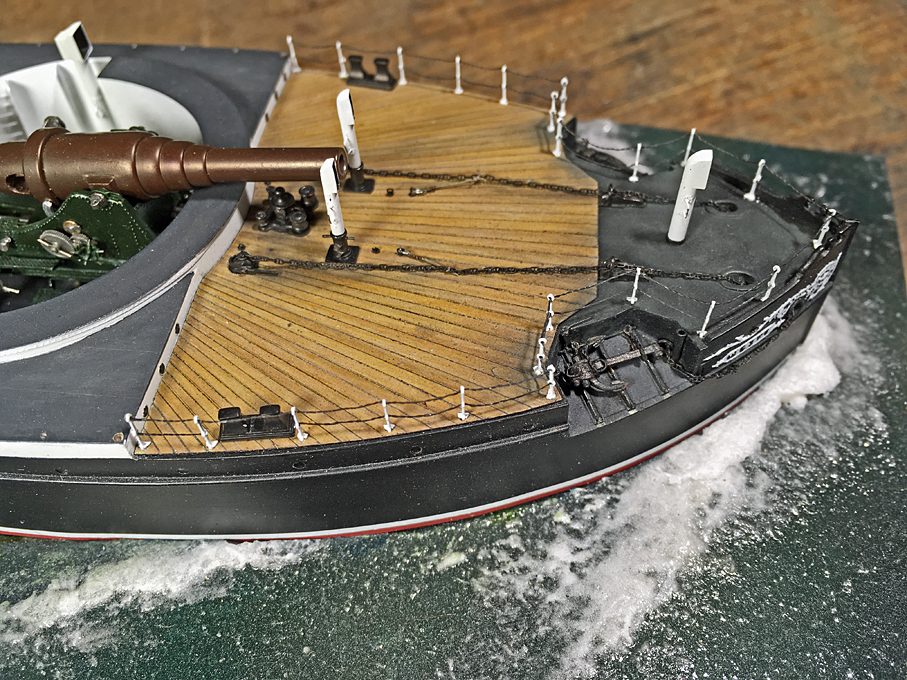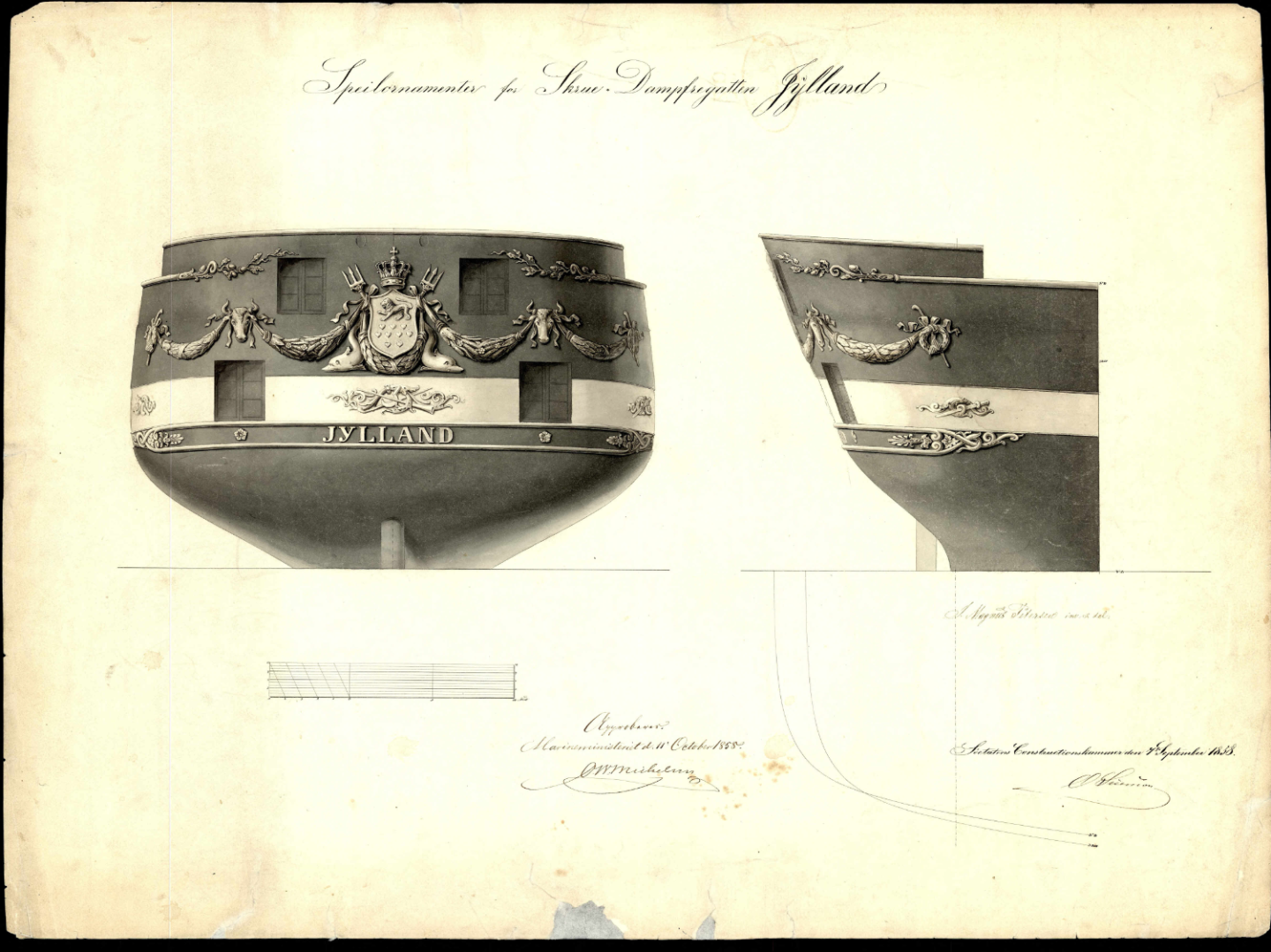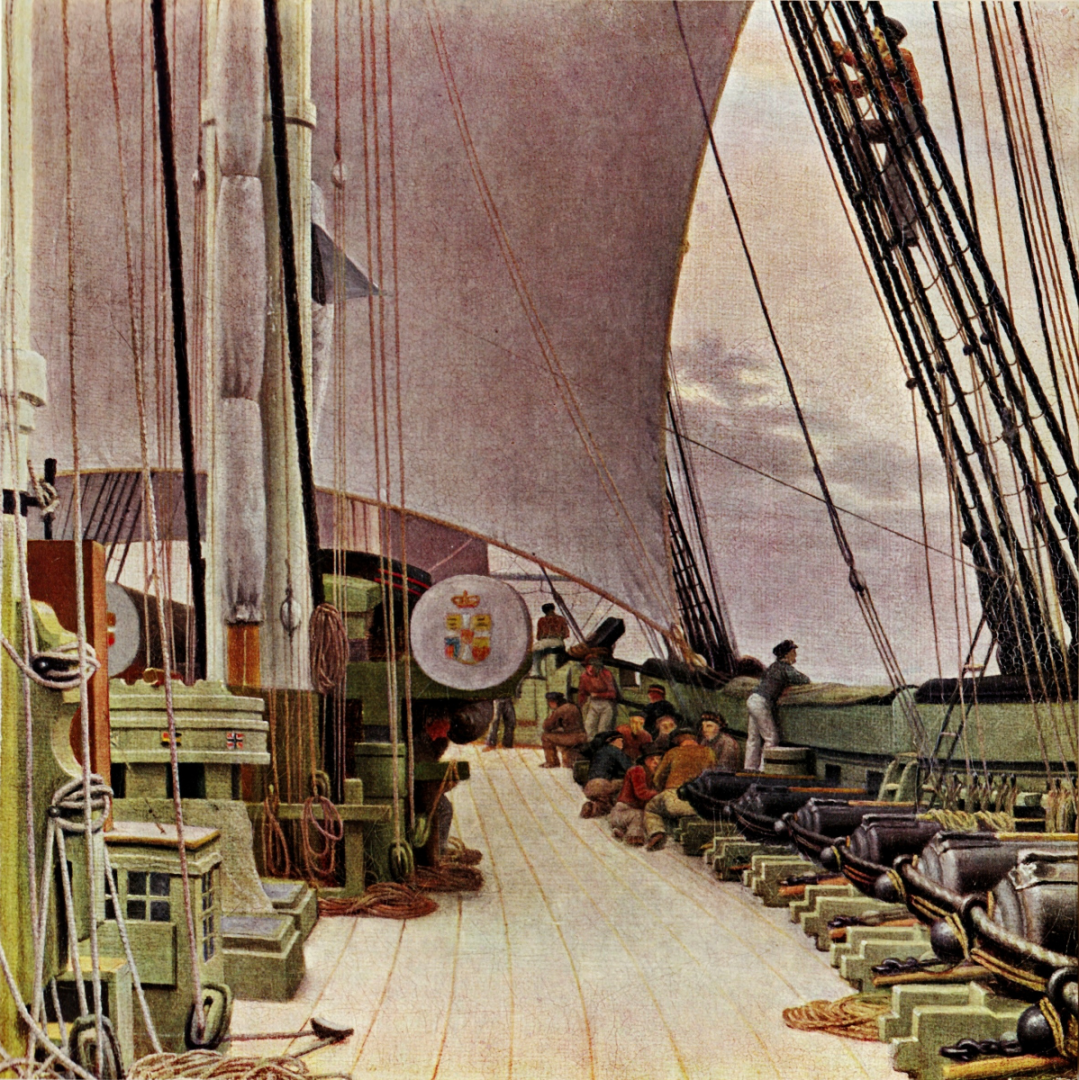-
Posts
5,583 -
Joined
-
Last visited
Content Type
Profiles
Forums
Gallery
Events
Everything posted by wefalck
-

Tiller tackle
wefalck replied to Dr PR's topic in Discussion for a Ship's Deck Furniture, Guns, boats and other Fittings
Phil, your question made me think and that is how ideas, discussions and eventually insights develop ... -

Elementary school clear glue?
wefalck replied to modeller_masa's topic in Modeling tools and Workshop Equipment
When it smells, than it is good and works 🤪 My father was a chemist (and I am a half-chemist too) and he taught me early on respect for chemicals, but not to have fear ... -

Tiller tackle
wefalck replied to Dr PR's topic in Discussion for a Ship's Deck Furniture, Guns, boats and other Fittings
This is a common problem with amateur historians, they collect large amounts of knowledge from which they quote, but then are not able (or willing) to give proper references ... It will be near impossible to prove a date, when steering wheels were introduced, but one may be able to pin down a period, when the whipstaff definitely disappeared. One should dive into the reserve collections of the various maritime museums. They usually have functional models for innovations that were proposed to the Admiralty or to the (predecessors of) patent offices. The wedging device on the tiller of LADY WASHINGTON could be a case like that. I have not seen that before - that's why an open rope and a pin or something to belay the rope was used. -

Tiller tackle
wefalck replied to Dr PR's topic in Discussion for a Ship's Deck Furniture, Guns, boats and other Fittings
It may be indeed very difficult to put a date on such arrangements - unless one chances upon an illustration from the period in question. My guess is that not many such illustrations taken on board a ship would be available from before the early 19th century. Van de Velde jr. might be an exception, but I don't recall immediately any on-board drawings by him. As can be seen on the models quoted and many other ship models (e.g. Dutch models), it was common to have a pin or knob at the end of the tiller, which served as belaying point or brake for the tiller ropes. Actually, the arrangement with a drum and steering-wheel on the tiller may be a quite old one. It was used on the 'steert' (i.e. the tail) of Dutch windmills for centuries - a rope was stretched between two of a circle of bollards let into the ground for that purpose; the rope was wound around a drum that was worked with a wheel that looked like a ship's steering-wheel; the purpose was similar to that of a ship's tiller, to turn the mill (or its cap) into the wind using the mechanical advantage of the system. I think some mills also used tackles for the same purpose. It is difficult to know, whether this idea was adopted from ships or the other way around. Using spoked wheels to turn winding drums was also common on water-wells. I would assume that this was a technological principle that had been around for centuries. -

Tiller tackle
wefalck replied to Dr PR's topic in Discussion for a Ship's Deck Furniture, Guns, boats and other Fittings
When I took my first sailing lessons in 1971 or so, I was told to use the loose end of the main sheet in case of need to steady the tiller. I gather there are many variants of this depending on the size of the vessel. Tiller-steering was also very common even for comparatively large ships, i.e. smacks, (small) schooners etc. The steering wheel and related gear was an extra expenditure. One must assume that some form of steadying the tiller was employed. Depending on the size this could be single rope from the windward side, two ropes from each side wound around the tiller, or a more elaborate arrangement, as described above. In some regions of Europe, e.g. the Dutch/German North Sea coast also steering wheels mounted on the tiller were used in the 18th and early 19th century. The problem is indeed, that this falls under the category of 'running rigging' and is seldom documented on technical drawings. Below is an example of tiller-mounted steering wheel from a model of a snow-brig of 1839 in the Altona Museum (Hamburg). It is one of a series of models that were built in the early 20th century by shipwrights from drawings and other sources in the museum: And an example of the double tackle on the model of a schooner from 1846: -
Yes, styrene sheets and profiles tend to be quite soft in most cases, which is why modellers like to use them. Unfortunately, the harder variety as used for injection-molded kits is not available as raw material, such as rods. There are, however, people who manage to fabricate such thin long details as oars from styrene, including here on the forum ...
-
Thank you very much, gentlemen, for your kind comments. @amateur Well, when you look really close, it is not always as perfect as you may think. However, I try to use the airbrush, whenever possible, because this gives an even coating. Spraying white is difficult due to relative coarse pigment particles, black on the other hand is easy, because these particles are probably the smallest. Everything else is somewhere in between. I am mainly using Vallejo model air and Schmincke acrylics. I also tend to use less glue, but rather varnish to cement parts in place. Most parts have some sort of mechanical lock as well, so that the glue just provides added strength. The varnish can also cleaned up with solvent - when the cementing takes place before painting. Forgot to mention: some time ago @Toolmaker sent me a PM about braiding wires to imitate chain, a method that looked quite convincing. I tried it with the 0.06 mm Konstantan-wire I need to use and this is just to flimsy. It breaks very easily, when handled and I was not successful at that size. I gather with wire of 0.1 mm diametre or above it should work. In order to get the 'links' even one needs to pull quite a bit.
-
Thanks, gentlemen, though a bit belated for your encouraging comments ! ******************* Foredeck Chain-Rails Progress has been slow over the last few weeks because of various travels in the course of May (Italy, Germany, Spain) and because installing the rails is actually a slow process with breaks in between steps to let glue or paint dry. I was a bit worried about the various corners these chain rails take on the foredeck – not a problem in real life, but the fake chain made from double-twisted turned out to be surprisingly compliant, without getting kinks that could not be straightened out. Also, the ventilators for the crew-quarters beneath the foredeck were installed now. Next thing on the to-do-list will be the anchor-buoys that, according to the photographs usually were tied to the rails near the anchor-davits. Apropos anchor-davits: I realised after taking the above pictures, that I didn’t put them back yet – I had taken them out to facilitate the threading of the chain-rails. To be continued ....
-
"I understand why historians aren’t in love with the idea of these sorts of projects, ..." I gather there are couple of reasons: academic 'historians' these days seem to be more interested in the sociological aspects of history and are not really interested in the material culture as such, only in the sociology of their production. If I was nasty, I could say that in some respect this is a fall back in epistemology into those dark pre-enlightenment times, when all science and research had the main objective to validate a 'god-given' societal order. The historians these days seem to be desperate to prove how bad those old times were for most of the people. Academic historian may also have a valid point in treating 'our' work with some scepticism, as many amateur historians don't keep carefully track of their sources and the conclusions they draw from them. Such building logs are valuable in that sense, because they document the sources and how/why the builder has arrived at a certain interpretation. Another problem is that very few academic historians (which includes today unfortunately often also professional museum staff) have a background or training in maritime matters. There is a gap between understanding the socio-economic context of maritime artefacts and understanding how they were produced and used as objects as such. Because historian typically don't understand the latter, they are not interested in the objects. In the last 40+ years they were simply not taught anymore about material culture.
- 2,458 replies
-
- heller
- soleil royal
-
(and 9 more)
Tagged with:
-
By chance, I am currently reading Fox, J. (2021): The World According to Colour - A Cultural History.- Penguin, and have just finished the chapter on RED. I am still debating with my self, whether the book will provide much added value or whether it is just a string of sort of anecdotes. Anyway, a general observation is that in many non-European languages red = colour = beautiful and often the languages use the same word, where we are more discerning. Actually, in Russian also 'red' (красный) and 'beautiful' (красивый) seem to share the same root, so no wonder that the 'Reds' chose 'red' as their colour. So perhaps in a time when there were fewer choices of pigments/colours people just chose red because it was readily available in many parts of the world and because it was coloured it then was beautiful. So the inside of the bulwarks were 'beautified', while the hull on the outside remained largely utilitarian.
-
I gather the red barns etc. are a Scandinavian legacy, many buildings there were painted in red iron-oxide, apparently mixed with cattle-blood as a binder, dito. in some regions of England, I think. Further East, the wooden timber structures in some regions of western-central Europe were painted with the same mixture.
-
I have the feeling that the decal should have been placed higher. The windows/gun-ports would need to correspond with the deck levels. Below is the inboard profile of JYLLAND (archive no. G-1864-11) that gives you an idea of the deck-levels. The windows are marked in the profile by dark grey washes:
-
The market for anti-fouling paints was revolutionised by a certain Bremerhaven captain W. Rahtjen, who took out a patent in around 1860 for a paint that was initially composed of shellac, red iron-oxide and arsenic and/or mercury oxide. Later the shellac was replaced by cheaper (and sometimes more effective) resins. According to a German textbook on iron-shipbuilding of 1870, Rahtjen's Patent Paint was available by then also in green, blue, brown, and white. I gather the popularity of red and green as ship-bottom paint stems from the fact that they kind of simulate the familiar appearance of coppering. Another conclusion from the above observation is that by that time the respective pigments were cheap enough to be used even on ships' bottoms.
-
Green being an unlucky colour on ships must be an 'americanism' Over here in Europe, green was a common colour on ships throughout the 19th century. At a time, when the wales were picked out in colour, one band was usually either green or blue. Some ships also had green hulls and it had been the 'corporate identy' for at leas one sailing ship and one steamship line in Germany. Below is a painting from 1833 by the foremost Danish marine painter C.W. Eckersberg of the corvette NAJADEN that shows green bulwarks, gun carriages, skylights, etc.: Source: Wikimedia. Who sailed those cooling steamers that transported bananas from South and Central America to all over the world ?
-
I am not an expert on the 18th century, but when you look at 19th century textbooks from different countries, you will find many different ways of construction, depending also on the deck-level and on whether it is a merchant or naval ship. In general, however, the idea is to be able to create a water-tight space below the upper deck level, particularly in mechant ships. This is what keeps the ship afloat, even if everything else above has been carried away in a storm. This means that the space between the bulwark-stanchions (or between the frames, if these have been taken up to the main rail level to serve as stanchions) has to be filled with short pieces of wood. There is usual a plank with notches for the stanchions, above these, that covers everything. Inside the stanchions/frames runs a piece of wood that is typically at least twice as thick as the deck-planking. The naming of this piece may vary, but it is typically called the water-way, as it may have concave profile facing the deck in order to serve as such, the water-way. The water-way can also be built up of several elements, but the idea is not have a seam right there, were the horizontal deck turns into the vertical bulwark - which would be the corner, where water might collect and then cause rot along the seam. Depending again on the style of deck-planking, the period and the size of the vessel, there may be a wider deck-plank running inside the water-way, which would be the margin-plank. It has the same thickness as the deck-planks and is needed, when one want to nib the deck-planks into it at the bow or stern sections. A normal deck-plank would be too narrow to allow other planks to be nibbed into it. On ship, where the deck-plank is running at an angle against the water-way, without any nibbing, there is usuall also no margin-plank. However, such seems with acute angles are difficult to caulk properly.
-
As Allan said, price of the pigment was probably the determining reason. Red ochre was readily available in many parts of Europe and has excellent covering capabilities and weathering resistance (it is the end-product from weathering other rocks, particularly iron-bearing limestones, after all). From the second quarter of the 19th century on, fashion seems to have changed, when lead-white began to produced in larger quantities, bulwarks were painted white or sometime in pale green, yellow, blue or even in pink, when some other pigment was added to the lead-white.
-
Thanks for the hint. I have to check the compatibilities. While I do all the CAD-work on my recent Mac, the laser-cutter is run off an older MS Windows XP computer. The current driver for the laser-cutter is not available for MacOS. If I could run the laser-cutter directly off the Mac, that would make things simpler. All the artwork is done on EazyDraw and then converted in JPGs and then adjusted to the correct size in Photoshop. However, we digressing with this discussion from the original subject of the thread ...
About us
Modelshipworld - Advancing Ship Modeling through Research
SSL Secured
Your security is important for us so this Website is SSL-Secured
NRG Mailing Address
Nautical Research Guild
237 South Lincoln Street
Westmont IL, 60559-1917
Model Ship World ® and the MSW logo are Registered Trademarks, and belong to the Nautical Research Guild (United States Patent and Trademark Office: No. 6,929,264 & No. 6,929,274, registered Dec. 20, 2022)
Helpful Links
About the NRG
If you enjoy building ship models that are historically accurate as well as beautiful, then The Nautical Research Guild (NRG) is just right for you.
The Guild is a non-profit educational organization whose mission is to “Advance Ship Modeling Through Research”. We provide support to our members in their efforts to raise the quality of their model ships.
The Nautical Research Guild has published our world-renowned quarterly magazine, The Nautical Research Journal, since 1955. The pages of the Journal are full of articles by accomplished ship modelers who show you how they create those exquisite details on their models, and by maritime historians who show you the correct details to build. The Journal is available in both print and digital editions. Go to the NRG web site (www.thenrg.org) to download a complimentary digital copy of the Journal. The NRG also publishes plan sets, books and compilations of back issues of the Journal and the former Ships in Scale and Model Ship Builder magazines.




